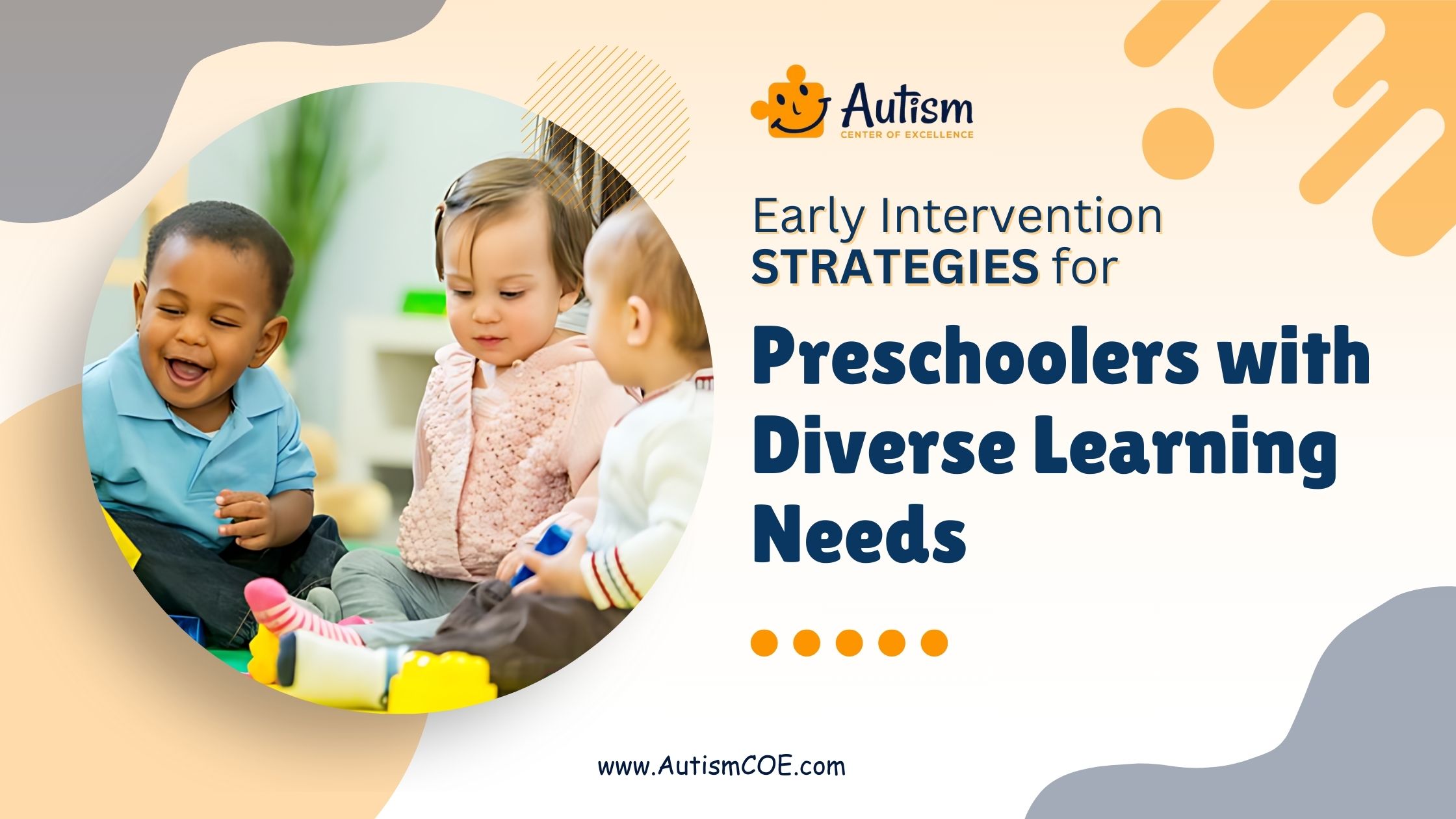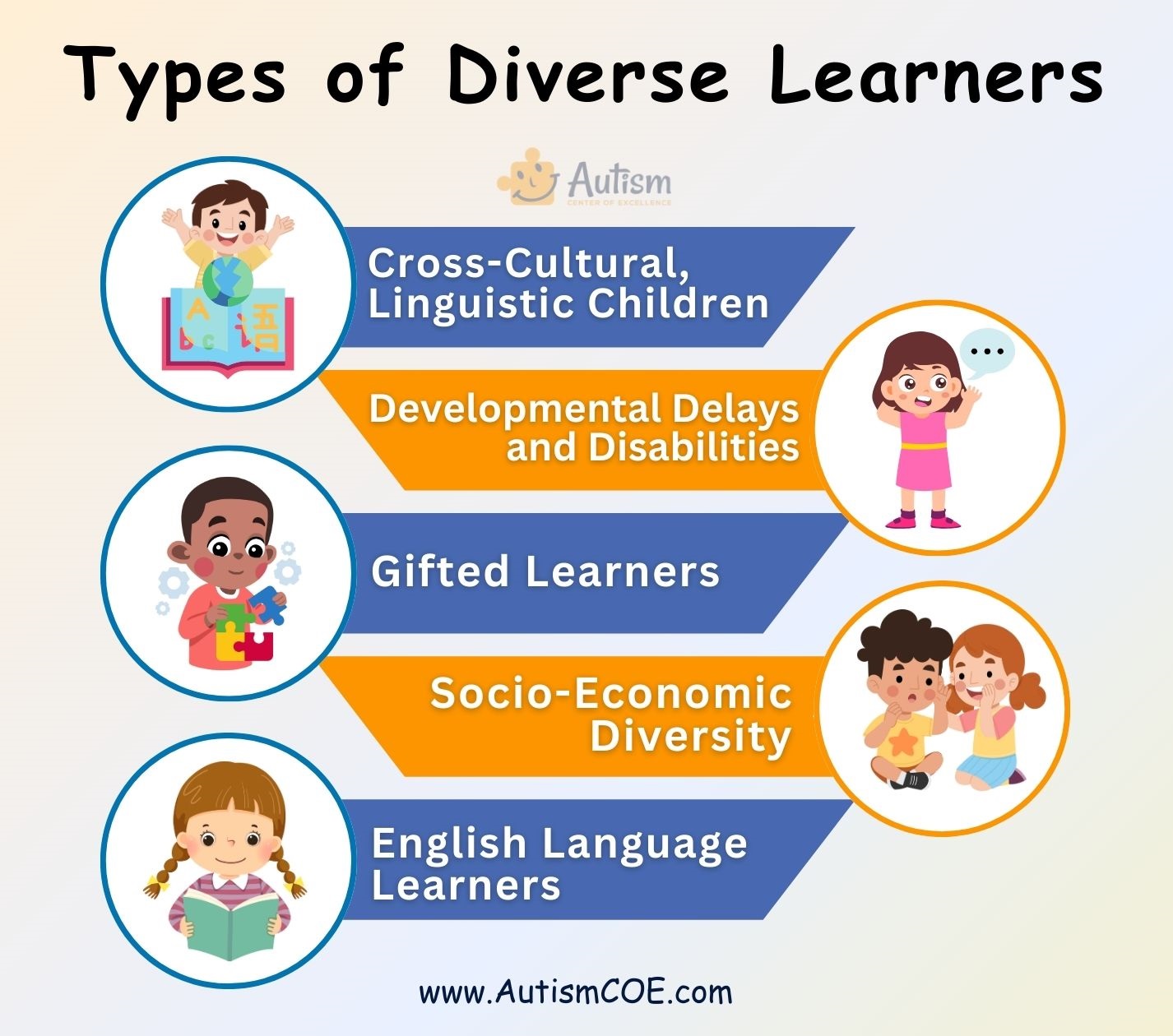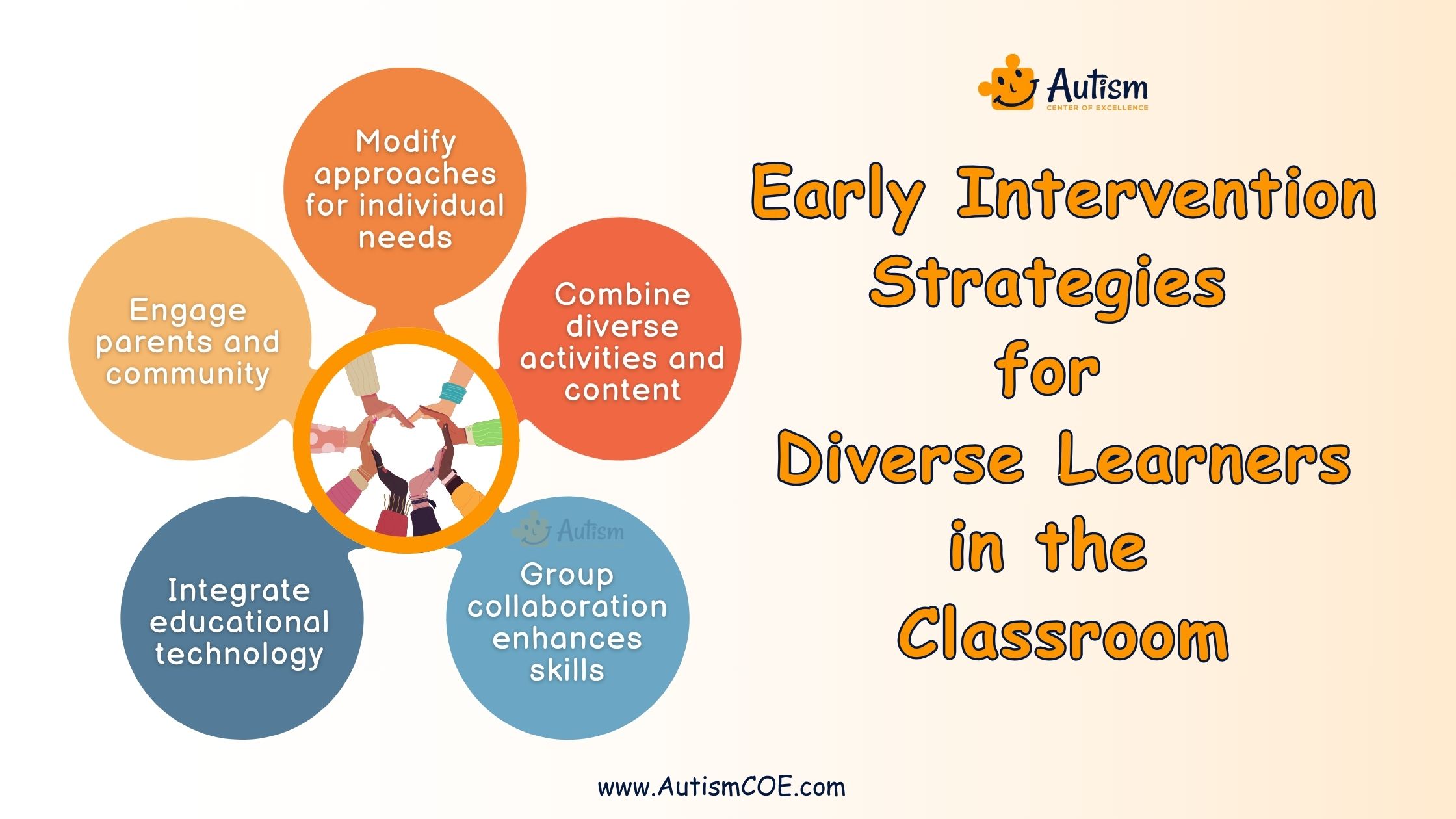Unit 24: Early Intervention Strategies for Preschoolers with Diverse Learning Needs

The word diversity has been one of the central themes in today’s multicultural and multifaceted society, especially in educational settings, especially early childhood education. As the preschool classroom increases in diversity, the responsibility to address manifold needs in young children’s learning is put to rest upon the educator.
Intervention at An Early Stage in diverse learning needs lays the foundation for lifetime learning and development. Strategies for supporting a child with special learning needs can form an inclusive and supportive environment, enhancing the growth and development of all learners.
What is Diversity in Child Development?
Diversity within Child Development refers to many differences among children in cultural, linguistic, socio-economic, and learning matters. It encompasses the unique experiences, abilities, and needs each child brings to the classroom.
It is essential to recognize diversity in preschool because it influences the way of learning and Interacting with Peers and teachers. Enabling these differences will help educators foster an environment of inclusivity and respect for the background of each child.
Diversity in preschool allows for understanding what is best to support the teaching strategy to help children continue their development journey. It fosters socio-emotional development, equipping the child to navigate the challenges of a diverse world.

Types of Diverse Learners
Preschool classrooms are home to various types of diverse learners, each with distinct learning styles and needs. These can include:
Cross-Cultural, Linguistic Children
This group includes children from a variety of cultural backgrounds, encompassing those who speak languages other than English. The children bring something special to classrooms, adding color to the cultural tapestry of learning environments and experiences.
Developmental Delays and Disabilities
This category of learner has issues in the development of normal capabilities; it may also include those with Autism Spectrum Disorders, ADHD, or physical disabilities. In this respect, they need an Individualized Education Plan to make them independent in seeking education.
Gifted Learners
Children who show intellectual abilities far above what is age-appropriately expected to show complete use of the accelerated learning opportunities and enrichment options to keep them engaged and challenged.
Socio-Economic Diversity
This is the category of students found in low-income families or those faced with trauma and adverse childhood experiences. These factors can impact their educational journey, necessitating additional support and resources to ensure equitable access to learning opportunities.
English Language Learners (ELL)
These are children learning English as a second language. They require special language instruction and cultural support to succeed academically while becoming proficient in English language use.
Educators must know the differences among these learners and modify the teaching methods to cater effectively to the needs of every type of learner.
Enjoying Reading?
Join Our Weekly Newsletters!
Subscribe now to stay updated with our latest email updates.
What Are the Diverse Learning Needs of Children?
The diverse learning needs of children refer to the differences in the learning styles of children and the ways through which learners acquire information. In addressing the diverse learning needs of children, the teacher must understand and take into consideration the following factors:
1️⃣ Learning Styles:
Children develop how to process information in various ways, such as visually, auditory, and kinesthetic. Moreover, educators make classrooms inclusive by embedding various teaching styles for all learners.
2️⃣ Personal Interests:
Every child has the things that they like. This can be utilized as a motivating factor. A teacher can include these in activities and lessons to excite and motivate learning.
3️⃣ Developmental Stages:
Children grow and develop at their own rate, and these times should be recognized and valued. Instructors should provide activities and materials that match the developmental stages of the children in the class and reflect a range of abilities.
4️⃣ Cultural Background:
Each child is born with a different cultural background, and this shapes the way a child believes, values, and learns. This demands that educators incorporate culturally responsive teaching methods that make the environment inclusive and accommodating to diversity.
💫🎓🎨🏏🏹🏈✨
“Every Child Learns in Their Own Unique Way; Let’s Celebrate
The Beauty of Diverse Minds.”
🎈🎉🎊🎏🎖️
How to Identify Diverse Learners?
Identifying diverse learners requires constant observation and assessment of children’s interaction, behavior, and learning. The educators can do this using a wide range of tools and techniques, including:
Standardized Assessments
Tests are designed to measure children’s Developmental Milestones and learning abilities by providing specific data to teachers and parents on how to understand Cognitive, social, and emotional development.
Observations
Ongoing observations of children’s play and interactions inside and outside the setting provide valuable information about their interests, social development, and problem-solving capabilities that inform individual learning planning.
Parent-Teacher Collaborations
A parent and teacher can share views on the child’s improvement. In this regard, communication and meetings between parents and teachers ensure that home and school appropriately support the child’s development. With these strategies, the teacher can know whether a child is a diverse learner and what effective strategies are for support.

Early Intervention Strategies for Diverse Learners in the Classroom
Early intervention strategies should be implemented to address the needs of diverse learners so that equal opportunities are given for all students’ academic and social success. A few effective techniques include the following:
1. Differentiated Instruction:
It is the modification of approaches, materials, and activities to meet individual students’ needs in class. It means recognizing that each student learns differently in different learning modes and varies in learning readiness or processing speed. Differentiated instruction involves using visual, auditory, and hands-on teaching methods.
2. Inclusive Curriculum Design:
An inclusive curriculum combines activities and content that reflect all students’ diverse backgrounds, cultures, and abilities. This provides opportunities for enhanced levels of student interest and deeper understanding and appreciation for diversity. Multicultural literature, relevant real-life examples, and different perspectives would enrich the learning experience.
3. Social Learning:
Encouraging peer interactions through group games fosters social skills and Inclusive Education. This way, the strategy enables kids to learn from each other, develop communication, and build community within the class. Collaborative learning allows students to use life-necessary skills such as empathy and cooperation.
4. Technology Use:
The educational technology integrated into the classroom will support personalized learning experiences by using different learning tools to meet the needs of the students. Technology can bring in more interactive, adaptive learning resources such as educational apps and online platforms where students learn quickly and dwell on their interests.
5. Parent and Community Involvement:
Building partnerships with parents and the community is crucial for gaining insights into children’s diverse backgrounds and providing necessary support and resources. The Involvement of Parents may lead to encouraging the students even more and inspiring the process within the family. Parents can even assist by providing the required resources, like mentors and cultural programs for enhancement.
This way, educators can create an inclusive classroom where every child feels supported by the community.
Why is Diversity Important in Preschool and Early Intervention
Preschool and early intervention will also enhance independence and understanding among peers and prepare them for an increasingly diversified world. Exposure to different cultures, languages, and traditions develops an appreciation of difference, fostering acceptance and inclusion in the young mind.
A vision of diversity instills empathy and appropriate social skills for future interactions in children. This will help them negotiate their way through various social settings confidently and sensitively.
In addition, intervention in early childhood learning needs makes the potential gaps in learning fewer, allowing children all equal opportunities to succeed. By accounting for a range of learning styles and bringing awareness to children’s diverse backgrounds, educators can thus provide more personalized support that meets children’s unique needs.
This will indeed have an individualistic benefit for the learners but also make the learning environment a place where students feel valued and recognized.
Frequently Asked Questions & Answer
What Do You Mean by Learners with Diverse Needs?
Learners with diverse needs are children who require personalized educational approaches due to their unique abilities, backgrounds, or challenges, such as cultural differences, learning disabilities, or giftedness.
Is Autism Considered a Form of Diversity?
Yes, autism is considered a form of diversity as it is included in the spectrum of diverse learning needs, acknowledging the unique perspectives and abilities of individuals with autism.
What are Examples of Diverse Learners in the Classroom?
Examples of diverse learners in the class include students from different cultural backgrounds, those with learning disabilities like dyslexia and ADHD, and children identified as gifted.
What are the Characteristics of a Diverse Student?
A diverse student may exhibit varied learning styles, come from different cultural backgrounds, and possess unique abilities or challenges that require tailored educational strategies.
Conclusion
Inclusive education and Early Intervention are parts of child development that bring out potential among preschoolers with diverse learning needs. Educators and caregivers can lay a robust foundation for lifelong learning and development by addressing these needs early. The strategies discussed aim to support various learning styles and abilities and foster an environment where empathy and understanding thrive.
This approach better equips the child to deal with life in a multi-cultural world, developing respect and collaboration. In this mission to work with varied learners, especially children on the autism spectrum, AutismCOE is an essential stakeholder, as it provides resources and support that are appropriately designed to meet unique needs.
The long-term benefits of implementing early intervention strategies cannot be overstated. Inclusiveness in educational settings extends from the class into society, and children are taught to respect differences, leading to a more harmonious society.
Please Note: The content of this blog is for informational purposes only and should not be considered a substitute for professional medical advice, diagnosis, or treatment. Consult a qualified healthcare professional for personalized guidance tailored to your specific situation.

Bhavika Bhasin
Bhavika Bhasin is the Research and Marketing officer at AutismCOE. She works with children and adults with ASD. Her clinical research includes evaluating various available autism screening and diagnosis methods and their efficacy. She is currently developing a novel screening exam that is indicated to be more accurate than the existing available exams. She is also writes articles papers for various publications.

